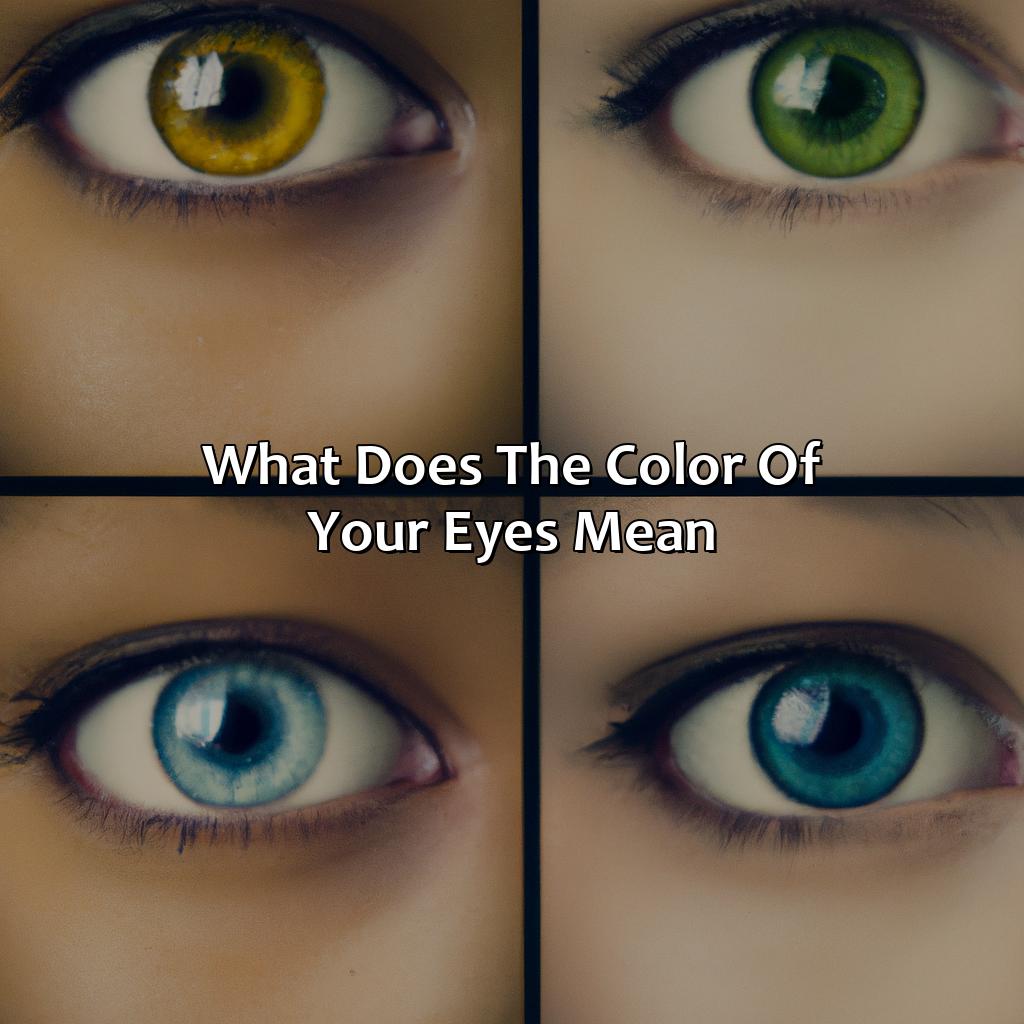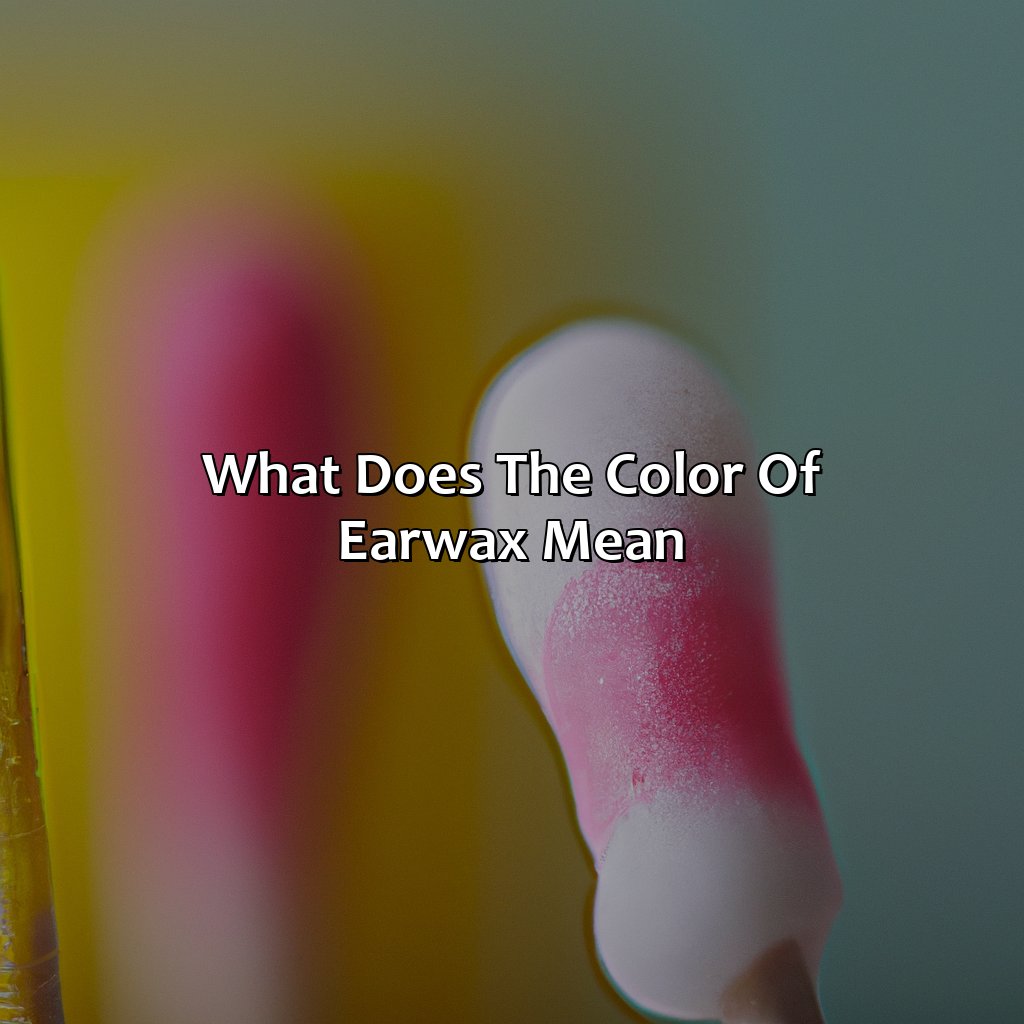Key Takeaway:
- Eye color is determined by genetics and melanin production, which can vary among individuals and populations, resulting in a wide range of eye colors.
- Brown eyes are the most common eye color and are associated with warmth, reliability, and practicality.
- Blue eyes are a rare eye color and are often associated with intelligence, creativity, and sensitivity.
- Green eyes are a unique eye color and are often associated with mystery, curiosity, and passion.
- Hazel eyes are a colorful eye color and usually feature a mix of brown, green, and gold tones, making them versatile and expressive.
- Gray eyes are a natural eye color that can vary from stormy gray to icy blue-gray and are often associated with wisdom, calmness, and intuition.
- Despite many myths and stereotypes surrounding eye color, there is no scientific proof that links eye color with personality traits or health conditions.
- Eye color has cultural significance in different parts of the world, and there are many famous people with all types of eye colors.
- Although changing your eye color permanently is not possible, there are ways to enhance your natural eye color with makeup, colored contacts, and other non-invasive techniques.
Factors affecting eye color
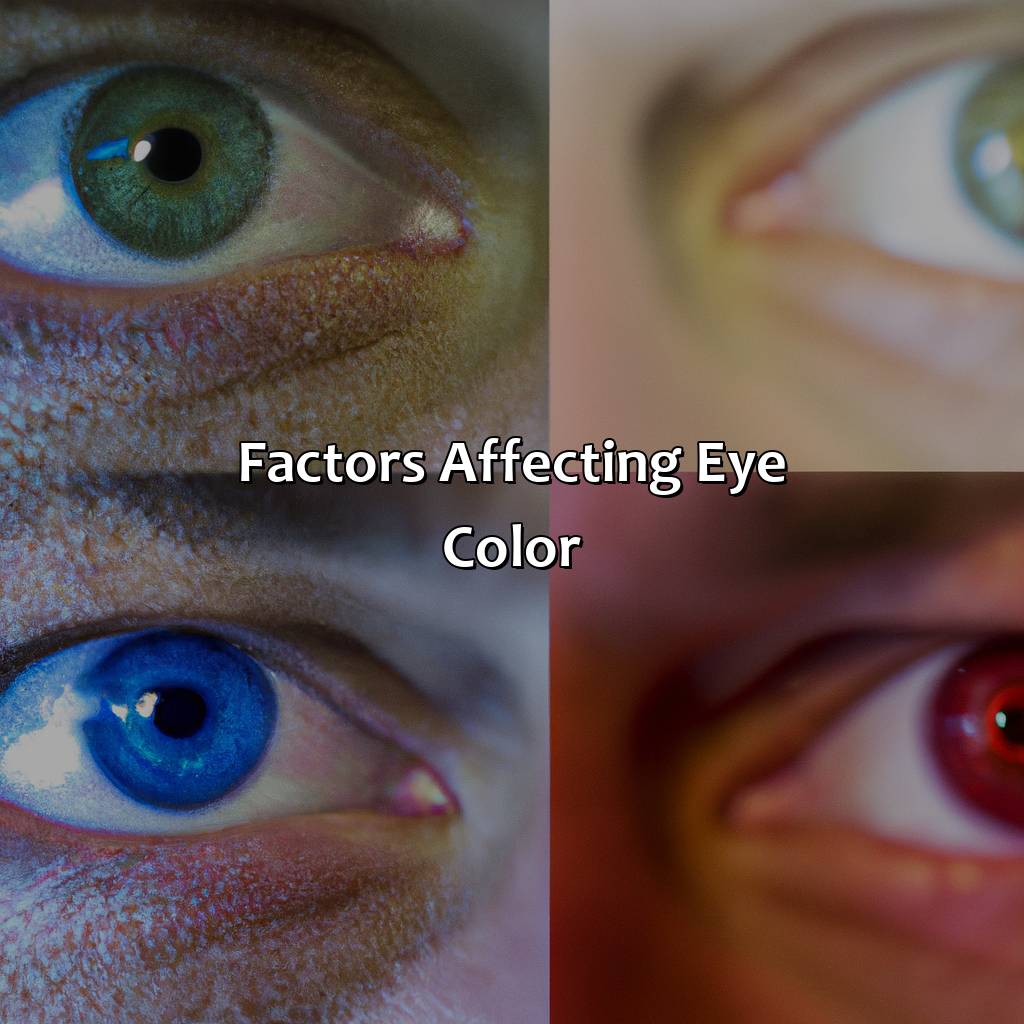
Photo Credits: colorscombo.com by Philip Harris
Eye color is affected by several factors. Let’s look into genetics and inherited traits. Genes control inherited traits and influence your eye color. Melanin also matters. It creates the entire eye color spectrum. So, melanin determines the hue of your eyes. It can tell a lot about the eye characteristics.
Genetics and inherited traits
The color of one’s eyes is determined by the genetics of eye color, which is based on the dominant and recessive genes passed down from parents. The gene responsible for melanin production is called OCA2, which regulates the amount and type of pigment in the iris. Different variations of this gene lead to differences in eye color. For example, a person with two copies of the brown allele will have brown eyes, while someone with two blue alleles will have blue eyes.
Studies have found that multiple genes contribute to eye color inheritance, making it a complex trait. Inherited factors can only predict the likelihood of a certain eye color but cannot accurately determine it. External factors like aging, illness or injury can also change eye pigmentation.
Unique details about genetics and inherited traits include identification of other genes associated with eye pigmentation like HERC2 and SLC24A4 that interact or regulate melanin synthesis. Gene editing technology could modify these genes in future treatments for genetic diseases.
To ensure accurate results in assessing probability possibilities for offspring’s’ genetic traits or providing health treatment based on genetic information and medication, consultation with medical practitioners is recommended. However, all test results should be considered as only indicative as there are external factors that play an enormous role in determining outcomes in medicine.
Based on Genetics and inherited traits, people’s eye colors are determined at birth with many unique aspects based on their uniqueness; however scientific study advancements could allow treatments on genetic diseases that manipulate certain genes associated with eye pigmentation using various techniques available today including CRISPR-Cas9 technology.
Melanin: the pigment that determines if you have baby blues or a fiery stare.
Melanin and pigmentation
The color of the iris is determined by the presence and amount of melanin pigment. Melanin is produced by specialized cells called melanocytes, which are located in the stroma (connective tissue) of the iris. The more melanin present in the iris, the darker the eye color will be. When it comes to eye color spectrum, brown eyes have the highest concentration of melanin, followed by hazel and green eyes, and finally blue and gray eyes with the least amount of melanin.
Melanocytes produce two types of pigments that determine eye color: eumelanin (brown/black pigment) and pheomelanin (red/yellow pigment). Brown-eyed individuals have a higher concentration of eumelanin, while blue-eyed individuals have less or no eumelanin but more pheomelanin.
There are several known genes that play a role in regulating melanin production and affecting eye color. The most well-known gene is called OCA2, which encodes for a protein involved in transporting melanin to cells. Other genes include HERC2, SLC24A4, TYR, etc. Variations in these genes can lead to differences in melanin production and affect eye color.
Interestingly, some people’s eye colors can change over time due to different factors such as aging, illness, injury or medication use that affect melanocyte activity.
In ancient times, mythology was intertwined with science when it comes to explaining eye-color variability. Some ancient societies believed that people with certain colored eyes had special powers or were cursed due to their iridescent tones. Today we know that there is no scientific evidence linking personality traits or health risks with specific eye colors. Nonetheless many cultures view certain hues as desirable based on traditions associated with these shades such as admiration for striking ‘cat-eyes’ among Greeks influenced by Egyptian antiquities.
Your eye color may reveal more than just your genetics, it can also give a window into your personality traits and even your health.
What do different eye colors mean
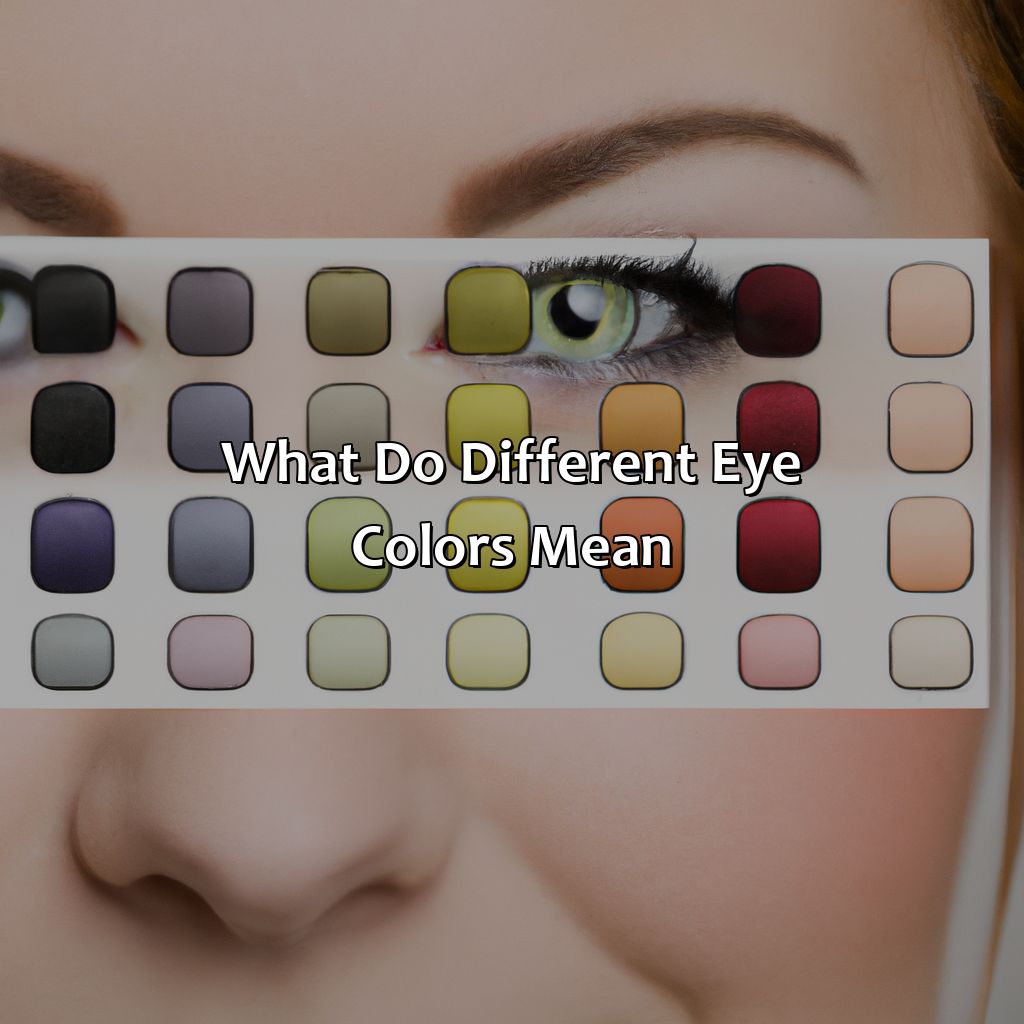
Photo Credits: colorscombo.com by Christian Wilson
For insight into the symbolism of eye colors, peruse this section that considers what different eye colors mean. The colors covered are brown (common), blue (rare), green (unique), hazel (colorful) and gray (natural). Find your solution here!
Brown eyes
The color of the iris is determined by the amount and type of pigmentation. Brown eyes are the most common eye color, accounting for approximately 79% of all human eyes. The brown pigment in the iris comes from melanin, which also causes skin to tan. The more melanin present in the iris, the darker brown the eyes will appear.
Brown eyes are a dominant trait, meaning that if at least one parent has brown eyes, there’s a good chance their child will inherit that trait as well. However, this is not always the case since genetics can be complicated. Darker skin tones are also more likely to have brown eyes due to increased melanin levels.
Interestingly, studies suggest that people with brown eyes tend to be viewed as more trustworthy and intelligent in comparison to those with lighter colored eyes. Furthermore, individuals with brown eyes may be at a lower risk for certain eye diseases such as macular degeneration.
Historically, brown-eyed people have been celebrated in many cultures for their beauty and perceived strength or intellect. For example, during ancient Egyptian times, brown-eyed women were considered to be highly desirable for marriage.
In summary, while brown eyes may not seem as exciting as other uncommon eye colors like green or blue, they hold significance in terms of being the most common and celebrated eye color across multiple cultures throughout history.
Blue eyes are rarer than a unicorn on roller skates, but their beauty is unmatched.
Blue eyes
As blue eyes are relatively rare, they can stand out and attract attention. Blue-eyed individuals may find their looks more noticeable than those with more common eye colors. Additionally, people with blue eyes may feel special because of their rarity.
It is important to note that despite the cultural significance attached to eye color, there is no scientific evidence to show that any particular personality types are associated with blue eyes.
True fact: According to a study conducted by researchers from the University of Copenhagen, all blue-eyed people share a common ancestor who lived around 6,000 to 10,000 years ago.
Green eyes are like unicorns, rare and magical, but they’re not just for fairy tales.
Green eyes
The iris pigmentation of the eyes determines its color, and Green eyes are a unique eye color. The green color is due to lesser melanin in the iris and has a yellowish-brown area surrounding the pupil in the center.
Green eyes have different shades that vary from light green to dark emerald green. Moreover, green eyes are pretty rare as they occur in only 2% of the population worldwide, making it unique.
Studies suggest that people with green eyes have an attractive personality and possess diverse characteristics like creativity, mystery, and confidence.
A true fact- According to a research study published in Nature Genetics, scientists have found six genetic variations responsible for influencing eye color.
If brown eyes are boring and blue eyes are basic, then hazel eyes are the fun and colorful middle child of the eye world.
Hazel eyes
A unique blend of colors characterizes hazel eyes, which are not purely green or brown. This colorful eye tone is a result of the interplay of light, genes and genetics. Depending on the amount and distribution of melanin in the iris, hazel eyes can look a range of colors from green to brown with speckles. Hazel-eyed people may also experience changes in their eye color due to lighting and environment, making them appear more brown or green.
Pro Tip: One way to accentuate the beauty of hazel eyes is by using gold, copper or warm-toned eyeshadows that bring out the warmth in the iris color.
Gray eyes may be the color of natural selection, but don’t expect them to blend in with the crowd.
Gray eyes
The unique natural eye color, known as gray eyes, is a rare but beautiful phenomenon that is characterized by a mix of blue or green and gray tones. This natural eye color results from low melanin levels in the iris and the scattering of light through the thin layer of melanin. Gray eyes are associated with various intriguing qualities such as mystery, intelligence, and innovation.
Gray eyes have been wrongly associated with negative traits such as coldness in personality, but this untrue perception has been debunked scientifically. Gray-eyed individuals have normal personalities and should not be stereotyped negatively based on their unique physical trait. Furthermore, gray-eyed people can experience health issues common to all eye colors.
Anne Hathaway is one famous example of someone who naturally possesses gray eyes that enhance her captivating beauty. Her confident and charismatic personality makes it impossible for anyone to think less of her because of her eye color.
Sorry to burst your bubble, but your eye color has nothing to do with your personality or health – it’s all in your genes!
Myths about eye color
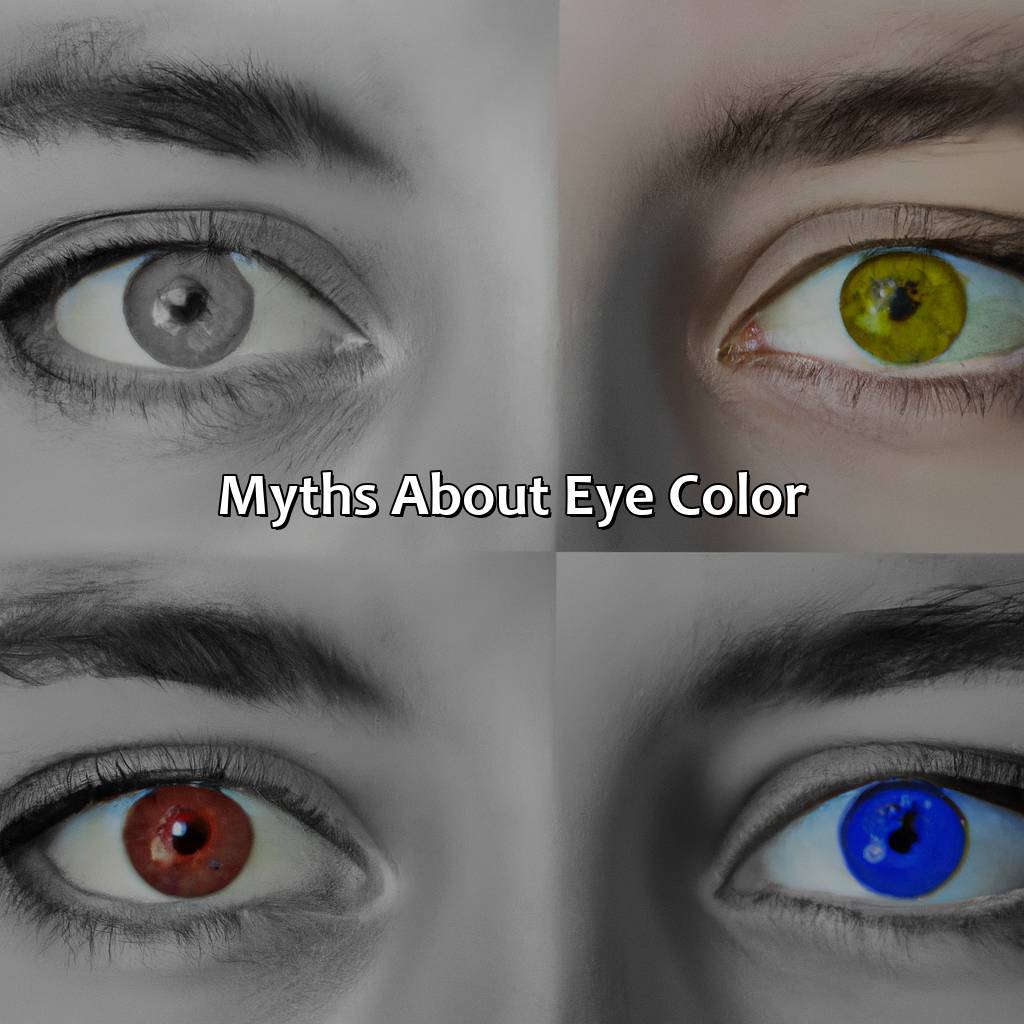
Photo Credits: colorscombo.com by Philip Taylor
Let’s bust those myths about eye color! We’re here to give you the facts in our ‘Myths about Eye Color’ section. Here, we’ll talk about the true nature of eye color and how it relates to our personality and health. Check out the ‘Eye Color and Personality’ and ‘Eye Color and Health’ subsections to know more about stereotypes related to eye color and how it could be a sign of underlying health problems.
Eye color and personality
The shade of your iris holds a significant but often perceived personality trait. Different eye colors convey distinct personality traits and characteristics. Your eye color may reveal deep insights into your nature, emotions, and behavior patterns. It is commonly believed that one’s eye color speaks volumes about their character and psyche.
Blue-eyed individuals are often assumed to be intelligent, creative, communicative, and confident. Brown eyes are considered to represent warmth, strength, reliability, and loyalty – making alluring partners. Green-eyed persons with their captivating gaze hold characteristics like mystery, envy, sensuality, and possessiveness. Hazel-eyed people are associated with compassion, adaptability, multidimensional traits, energy, and spontaneity. Gray eyes are believed to embody stability but also powerlessness.
Some stereotypes exist related to eye color as well. Blue-eyed people might be judged as arrogant or cold-hearted while brown-eyed individuals may come across as hardworking yet uninteresting.
Pro Tip: Remember that everyone is unique regardless of their eye color personality traits. Avoid quick assumptions or judgment based on someone’s physical appearance before truly getting to know them as an individual. Eye color may not determine your health, but it can definitely add a pop of color to your medical records.
Eye color and health
The color of our eyes can provide insight into our genetic makeup and inherited traits. While some may speculate that eye color is connected to health or vision problems, this is not necessarily true. Eye color cannot predict the likelihood of developing any specific eye disease or condition.
However, there are some correlations between certain eye colors and the likelihood of developing certain types of eye diseases. For example, those with lighter-colored eyes may be more at risk for developing cataracts than those with darker eyes. Additionally, individuals with blue or gray eyes may be more susceptible to age-related macular degeneration.
While it’s important to monitor one’s overall eye health regardless of eye color, those with lighter-colored eyes should take extra precautions in protecting their vision as they may be at a higher risk for certain conditions.
For instance, wearing sunglasses and hats when outdoors can protect against harmful UV rays that can contribute to cataracts and other damage to the eyes. Regular visits with an optometrist or ophthalmologist can also help catch any issues early on and prevent any long-term damage.
Overall, while eye color doesn’t directly relate to one’s health or likelihood of developing vision problems, it’s important to take steps in protecting one’s overall ocular well-being regardless of genetic makeup.
From ancient theories to modern celebrities, eye color holds a significant place in various cultures and societies.
Cultural significance of eye color
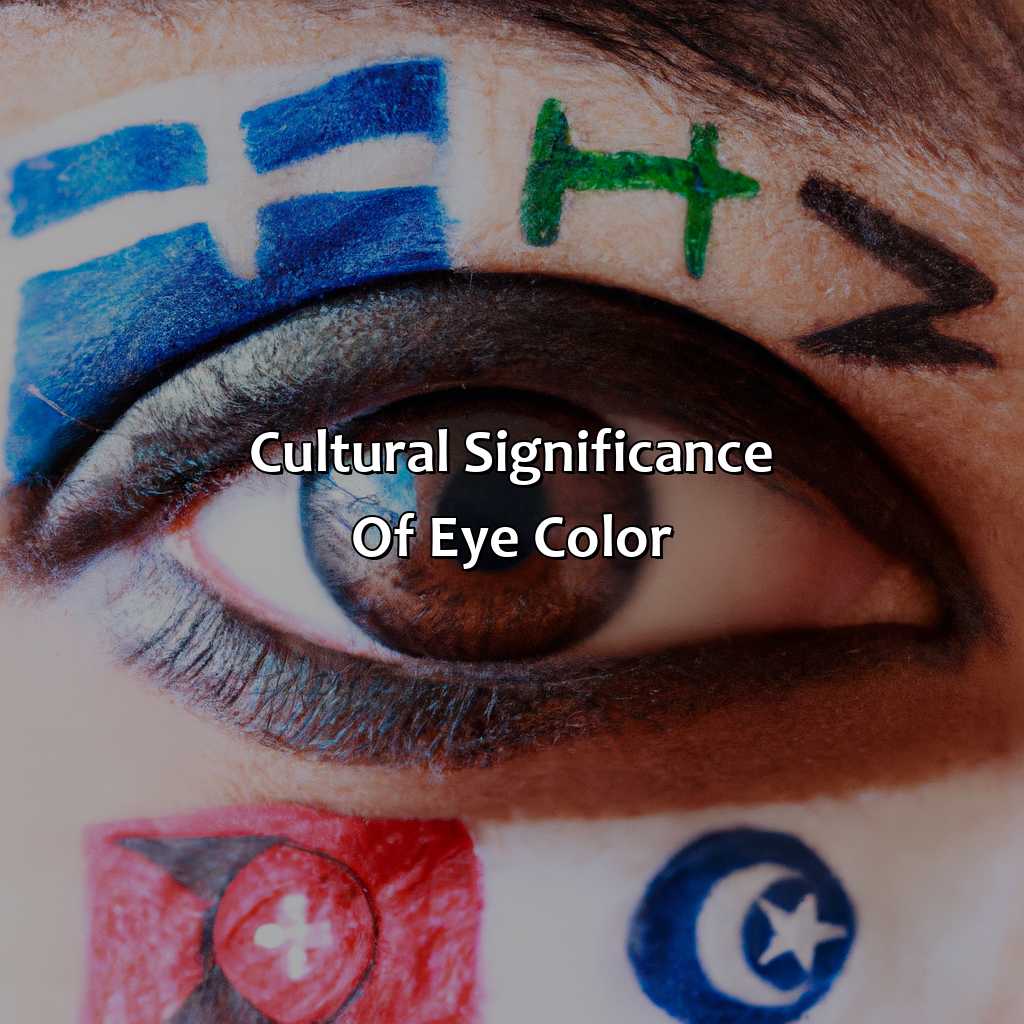
Photo Credits: colorscombo.com by Mark Martin
Eye color carries cultural significance in various societies around the world. Different cultures associate certain eye colors with unique traits or personality characteristics. In some cultures, green eyes are believed to be synonymous with fertility, while in others, they are seen as a sign of evil spirits. Interestingly, brown eyes are typically the most revered and considered the most beautiful in many cultures.
Moreover, some cultures even have unique beliefs and superstitions based on eye color. For instance, in some parts of Asia, it is believed that individuals with dark brown eyes possess godlike powers. Some cultures also associate specific eye colors with good luck or bad omens.
Did you know that Elizabeth Taylor, known for her stunning violet-blue eyes, actually had a genetic mutation that caused her to have two layers of eyelashes? This rare condition is called distichiasis and can cause irritation and discomfort.
Five Facts About What Does the Color of Your Eyes Mean:
- ✅ The color of your eyes is determined by the amount and type of pigment in your iris. (Source: All About Vision)
- ✅ Blue eyes are thought to have originated from a genetic mutation that occurred between 6,000-10,000 years ago. (Source: Forbes)
- ✅ People with brown eyes have more melanin in their iris compared to those with lighter-colored eyes. (Source: Medical News Today)
- ✅ Some people believe that certain eye colors are associated with personality traits, such as blue eyes being linked to creativity and brown eyes being linked to warmth and trustworthiness. (Source: Verywell Mind)
- ✅ Eye color can change over time due to aging, disease, or injury. (Source: Healthline)
FAQs about What Does The Color Of Your Eyes Mean
What does the color of your eyes mean?
Eye color is determined by the amount and type of pigments in the front part of the iris. Different eye colors can be associated with various genetic and environmental factors.
Is there a correlation between eye color and personality traits?
Some studies suggest that there may be a link between eye color and certain personality traits. For example, people with brown eyes are said to be more dependable and trustworthy, while those with blue eyes may be more creative and imaginative.
Can eye color change over time?
Eye color is typically set by the age of 3 and remains relatively stable throughout your life. However, in rare cases, certain medical conditions or injuries can cause changes in eye color.
Is there a difference in vision quality between people with different eye colors?
No, eye color does not affect visual acuity or quality of vision. However, certain eye colors, such as light blue, may be more sensitive to bright light or glare.
Are certain eye colors more prone to certain eye diseases?
Yes, some studies suggest that certain eye colors may be more prone to certain eye diseases. For example, people with light-colored eyes may be at higher risk for developing age-related macular degeneration.
Can the color of your eyes affect how others perceive you?
Yes, studies have shown that the color of your eyes can affect how others perceive you. For example, people with darker eyes may be perceived as more trustworthy, while those with lighter eyes may be viewed as more attractive.
